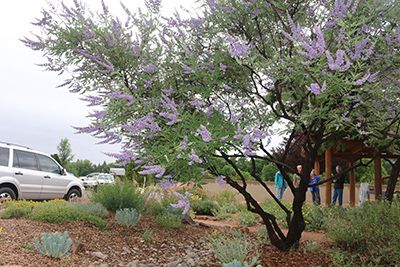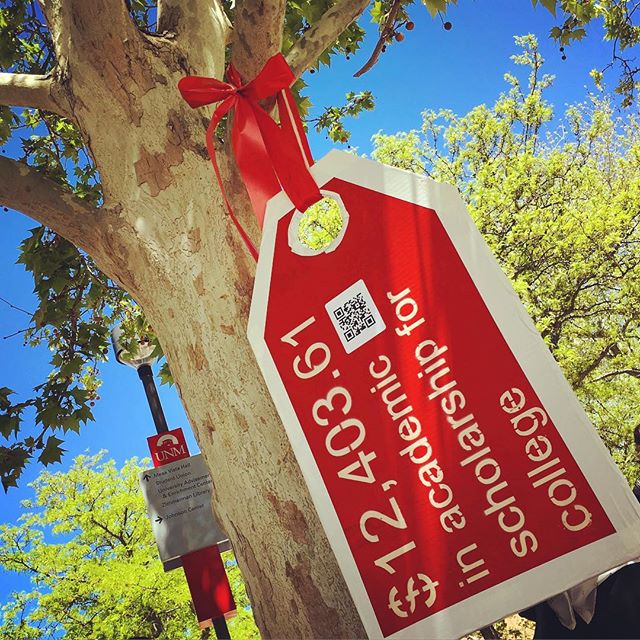What is urban heat? Dark surfaces like concrete, asphalt and brick absorb and retain heat from the sun. Little spaces between buildings can create heat canyons that trap this heat, forming “islands” that are warmer than rural or suburban areas.
Urban heat can affect us in many ways, such as increasing heat stroke, heart and lung diseases, energy costs, general discomfort, hyperthermia, and poor air quality. The U.S. Environmental Protection Agency projects that by 2040 Albuquerque will see four times the current annual number of days with temperatures of over 100 degrees.
But trees can help! Trees provide shade to keep us and the ground cool, as well as cooling the air through water loss, or evapotranspiration. Increasing the urban canopy can lower city temperatures.
Let’s Plant Albuquerque is a broad community alliance dedicated to planting 100,000 new trees in the city by 2030. The alliance represents a broad range of civic, government and community organizations dedicated to this goal.
The initiative brings together Tree New Mexico, the Albuquerque Bernalillo County Water Utility Authority, New Mexico State University Cooperative Extension Service, the Dakota Tree Project, New Mexico State Forestry Division, and the City of Albuquerque Parks and Recreation Department. Each organization works on its own tree planting and outreach projects, but all are joining forces to make their collaborative efforts more effective.
DEVELOP, a NASA Applied Sciences Program, studied Albuquerque’s urban heat. DEVELOP conducts feasibility studies that bridge the gap between Earth science information and society and works with communities and organizations to address environmental and policy concerns.
NASA DEVELOP found that a 30% increase in tree shade can help offset rising temperatures and allow neighborhoods to be cooler. Trees can also increase your body’s “thermal comfort,” how cool and comfortable you feel on hot days.
The city’s parks canopy alone provides many benefits, including energy savings, air quality improvements and increased property values. The nearly 30,000 trees in the city’s public spaces provide:
- $1.7 million in carbon monetary benefit
- $624,000 in stormwater monetary benefit
- $3.6 million in (overall monetary benefit

The Water Authority would like to encourage you to help cool our city by planting trees. The Tree-Bate program helps offset the cost of planting and maintaining trees.
When you buy a new tree, you can receive a rebate equal to 25% of the purchase price up to $100 a year. To help customers narrow down their purchasing decisions, the Water Authority assembled a list of 20 trees that are proven to thrive in our area, are commonly available for purchase, fit a variety of situations and provide numerous environmental benefits. A broader list of more than 160 qualifying trees is in the Water Authority’s Xeriscaping Guide. They include:
Mesquite (honey and screwbean)
Oak (escarpment, live and Chinquapin)
Chaste tree or vitex
Elm (alcolade and frontier)
Apricot
Crape myrtle
Russian hawthorn
What can you do next? Take the pledge to plant!
Learn more below:
How to Make a Tree Watering System


